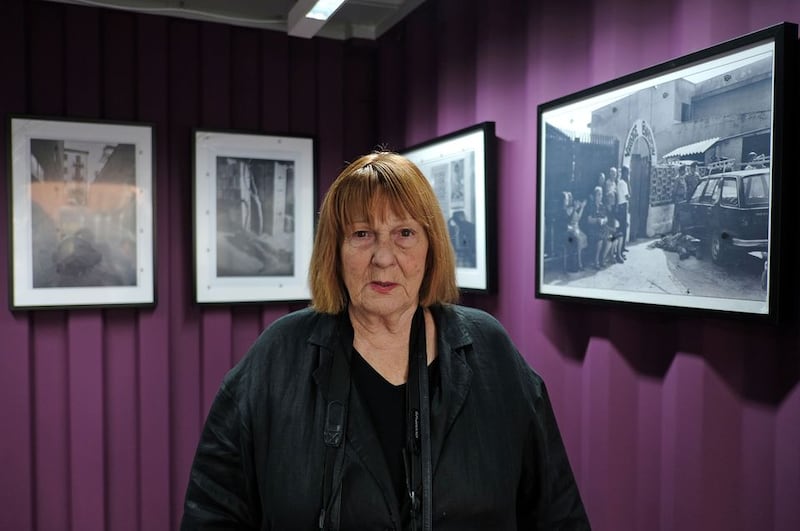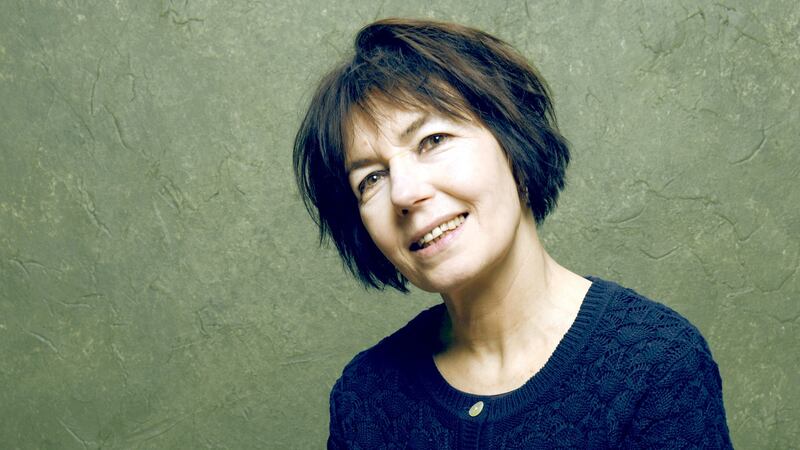At 83, Letizia Battaglia can look back over decades of groundbreaking work and some 600,000 images as a photojournalist and later, as the photography director of a left-wing newspaper in Palermo, Sicily, from 1974 to 1990.
Her career both mirrors and chronicles the mafia's most murderous years with extraordinarily moving tableaux of everyday violence. "I look at my photographs, it's just blood, blood, blood," she says during Kim Longinotto's Shooting the Mafia, a new documentary portrait of Battaglia.
"The more we read about Sicily and the mafia, the more we questioned the glamour of mafia movies," Longinotto says. "We've all seen Francis Ford Coppola's The Godfather. I was reading about Coppola and supposedly he said that he didn't know anything about the mafia when he was making The Godfather. He based them on his family. And I thought: yes, that's the problem.
"In mafia films, they're always these glamorous cowboy types in sharp suits and played by beautiful people like Al Pacino. Or they have the great writing of The Sopranos. You don't see them in the way that the people of Sicily saw them. You don't learn about the code of silence and how an entire society was brutalised. You hear about code of honour. You don't know that they killed children and women in the street."
Longinotto was introduced to Battaglia and her work by the veteran Irish producer, Niamh Fagan, after Fagan visited the Mafia and Anti-Mafia Centre in Sicily. The film was co-financed by Screen Ireland and was one of five Irish projects to premiere at this year’s Sundance Film Festival.
“Niamh saw these and thought: these are amazing; somebody should really make a film about them,” Longinotto says.
You listen to him and he's a psychopath
Luciano Leggio, the head of the Corleonesi - the major faction of the Costa Nostra in the 1980s - is typical of Battaglia’s subjects and of the carefully curated archival footage featured in Shooting the Mafia. “That scruffy moron”, harrumphs Battaglia.
“I love that she debunks Leggio and people like him,” Longinotto says. “You listen to him and he’s a psychopath. He says that the people that we kill don’t really suffer; we suffer because we have to do the killing. And that the people that they kill are less than human and homosexuals. He raged about homosexuals. That way they have of seeing themselves as supermen, who are more important than their victims, it’s the kind of thinking you find behind genocide.”
Material edited
The testimony of former mafia bosses, notably Tommaso Bruscetta and Salvatore Contomo, which resulted in the indictment of 475 mafiosi, informs the latter part of the film. While that testimony was widely covered in the media, in a trial that ran from 1989 to 1992 it was tricky to sample and cover for a feature documentary, as a great deal of the material was edited into sound-bites for rolling news coverage.
“The way the TV would use the footage, especially in the 80s and 90s, would be choppy and have a lot of voiceovers,” Longinotto says. “You know when people write articles or they’re talking on the radio about being a filmmaker? They always talk about it as if one person made the film. I’ve always went along with that but this film was totally made in the editing room.
“I had an Irish archivist Clare and an Italian archivist Cristina and they must have watched about 800 hours of Italian films and documentaries. I think a lot of people would have given up and said I’m fed up with this now. I’m so admiring of what they did. This film was made in the editing room.”

Longinotto, who has never been a huge fan of auteur theory, relied heavily on her archive researchers Cristina Rajola and Clare Stronge to source much of the visual material for Shooting the Mafia. It was a brave new world for the filmmaker, whose work is frequently characterised as Direct Cinema or fly-on-the-wall. She's not so sure about those labels.
“I’ve never thought of myself as fly-on-the-wall because if you know me I’m not a reserved person,” Longinotto says. “When I’m with people, I want them to talk to me. They know I’m there With fly on the wall, there’s a sense they somehow think you’re not there. But I’m very much there. I have an enormous camera. If it’s something very traumatic or a very emotional scene, people can forget you are around. But it’s not really Direct Cinema observational cinema. It’s a hybrid of those things.”
The Invisible Woman
It’s impossible to consider British documentaries of the recent decades without noting the Longinotto’s contribution to the medium. She’s not as visible as such male contemporaries as Louis Theroux, or her old friend, Nick Broomfield - indeed, several commentators have dubbed her the Invisible Woman - but her extraordinary body of work is unrivalled.
She has documented women living as men in Japan (Eat the Kimono, 1989), women who care for abused and neglected children in South Africa (Rough Aunties, 2008), and Tehran's divorce courts (Divorce, Iranian Style, 1998). The award-winning The Day I Will Never Forget (2004), a hard-hitting chronicle of female circumcision in Kenya, has been utilised by many FGM campaigners and charities.

I felt like a monster. But my brain told me this was what I was here for
“When we were filming the FGM or the mutilation or whatever it is you want to call it, I knew I had to film,” she says. “That’s what I was there for. It would have been so cowardly and so awful to have walked away. I remember the sound recordist Mary Melton got very upset. She was really angry with me. She hated filming it. She thought it was morally wrong to film it. I could see both sides of it. I felt sick at heart. And I felt like a monster. But my brain told me this was what I was here for.”
Despite the difficult and delicate subjects that Longinotto has tackled, she remains wedded to storytelling: “Without a good story, you’re not that emotionally involved. You know what the filmmaker wants you to think. But it’s just a manifesto. That has never interested me because what I’m trying to do is to take someone into a world. It’s like reading a novel or a really good article. Somehow, you’ll have an emotional leap of faith you’re seeing something from somebody else’s point of view. That’s that’s what I’m trying to do.”



















